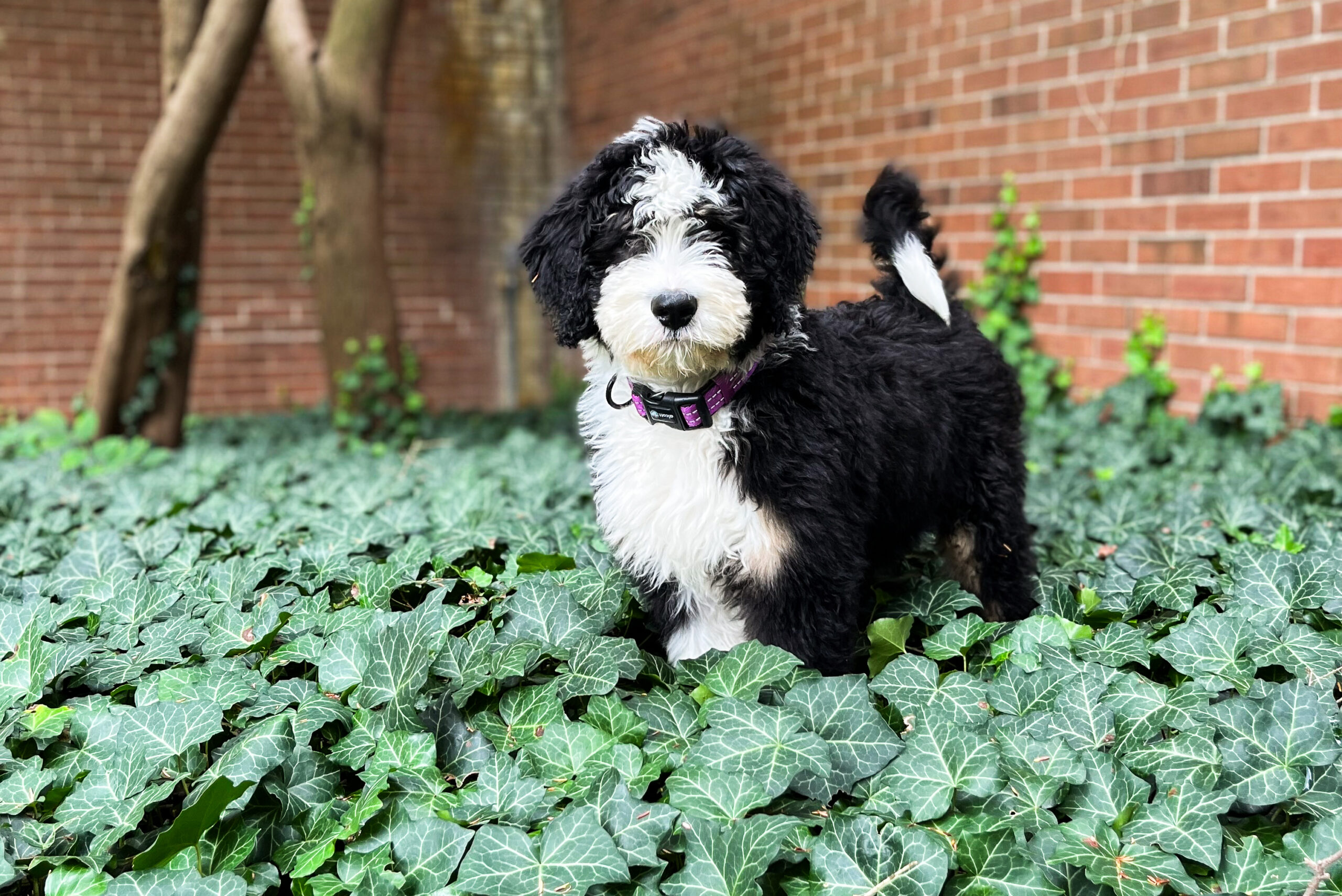After taking a laissez-faire approach to pets on campus for years, this past summer, Goshen College adopted a formal policy on when, where and how animals are allowed on campus.
Originally, there were no formal policies to guide spectators or employees who wanted to bring their animals on campus, which sometimes led to hesitant encounters or complaints.“It felt a bit awkward,” said Marlene Penner, director of human resources. “Should we tell them they can’t do that? [But] we don’t have a policy.”
Spectators often bring their pets to GC sporting events. Outside, they simply have to keep the animal on a leash and away from larger crowds. At indoor events, it’s a different story.
“[Spectators] would come and bring their dog and bring them into the gym,” Penner said. “We have people who are allergic to dogs; we have people who are scared of dogs.”
The policy states that “no animals are permitted in college buildings or facilities, except for students’ approved emotional support animals, service animals or pets owned by employees who live on campus.”
Giacomo Padilla, a junior business major, said he loved going to class in Newcomer Center and seeing his professor Alysha Liljeqvist’s dog, Milton.
“Milton was great to have in the building,” Padilla said. “During class he would roam in the room and if you needed a break from the lecture, you could pet him or play with him.” Padilla also said it was nice to have somewhere to go to relieve the stress of the day. “After lots of classes it was nice to go into [Liljeqvist’s] office and take Milton for a walk or play with him,” Padilla said. “It was a great stress reliever.”
Liljeqvist said she appreciates the policy’s clarification, and is hopeful that the campus can find a structured and safe way to keep dogs on campus. “I saw the benefits of having an animal around to reduce the stress on students,” she said.
“I really like how different groups on campus have been bringing animals,” she said. “I think that’s a great way to recognize the positive influences that animals have on student health and happiness. It also gives students a chance to opt in to that.”
The policy allows for events to be held where animals are off leash, but they need to be approved beforehand. Events like “Furry Friends” that the Good Library brought last year or Creature Connect from residence Life have to be approved and follow guidelines set forth by the policy.
Though some people enjoy having canine companions, others can feel scared or uneasy around animals.
Amelia Turnbull, senior broadcasting major, said, “I’m afraid of dogs. … When I was a kid, there was a dog that would chase me to school every day, so I think it may stem from that.”
Chandler Buchfeller, director of residence life and housing, is in a unique situation. As director, he lives on campus in the dorms with his dog, Daisy. He takes special care with Daisy, knowing that some students can be uncomfortable around dogs.
“Animals are inherently unpredictable, even if they’re tame and trained and all that fun stuff,” he said.
Buchfeller said he makes sure to keep Daisy on a leash and track who does and who doesn’t feel safe around dogs.
The changes regarding animals on campus do not overrule the campus’s existing policy about emotional support animals. It is instead intended to support and add clarification.
According to the Americans with Disabilities Act, when asking someone about a service animal, there are only two questions you can ask: if it is required because of a disability, and what work or task it has been trained to perform. “We have trained campus security to ask the right questions,” Penner said.
Chad Coleman, director of campus safety, notes the difference between emotional support animals and service animals: “ESA’s are more like a prescription,” he said, “whereas a service dog is more like a tool.”
Coleman encourages people to call campus safety promptly if someone is violating the animal policy. “A lot of times they won’t call us until after the fact,” he said. “They’ll just say, ‘hey there was a dog in here like two hours ago.’ What do we do about that?”
“It’s rare that we actually get the call in the moment when it happens,” he said. “So it’s just about reinforcing and reminding people not to take your animals inside buildings.”



